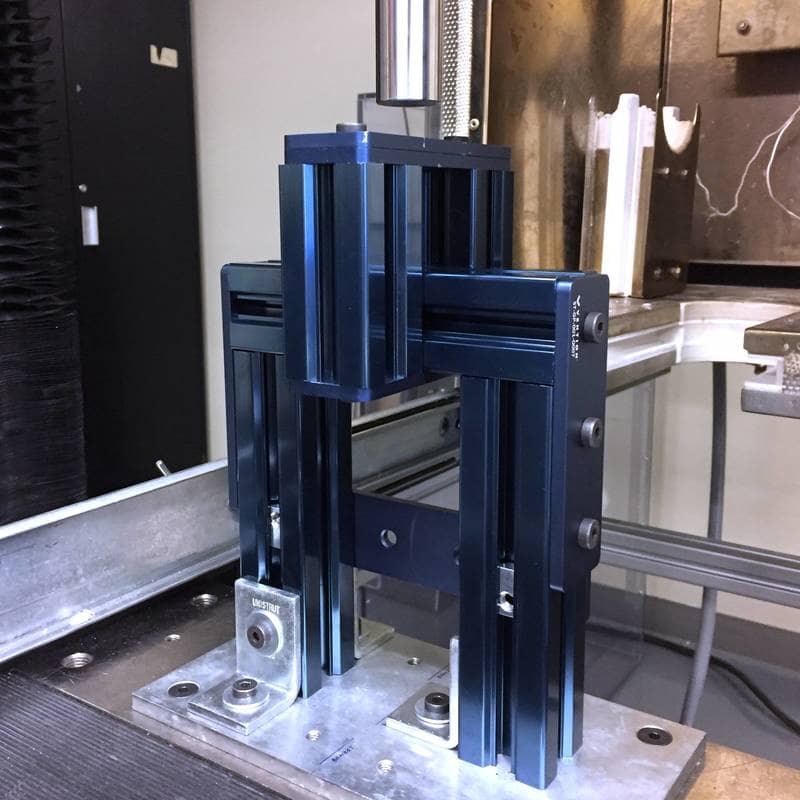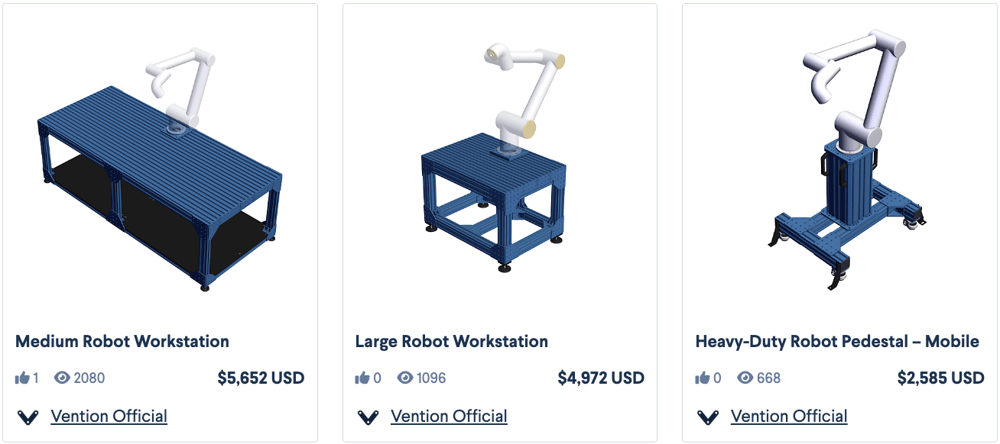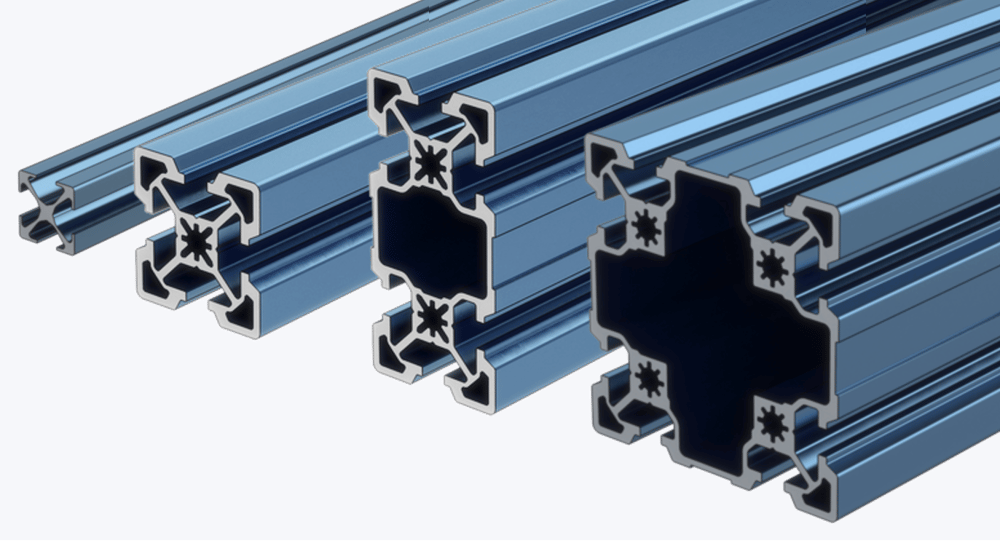
Our heavy-duty T-slot extrusion profile is now available in the Vention Parts Library and MachineBuilder. The new heavy-duty profile allows for quick and easy design of projects with heavier payloads and requiring more rigidity. Applications like extra large machine frames and industrial robot cells will directly benefit from this latest addition. Discover the story behind this new extrusion profile and the related benefits for your heavy-duty applications
Our strongest profile to date
The new profile is the strongest in the Vention modular system. The new larger extrusion profile has dimensions of 90mm x 90mm and maintains the patent-pending v-groove. It is compatible with:
- Fasteners
- Assembly plates
- Modular components.
This means that you can easily mix multiple profiles in a single design while maintaining ease of assembly.
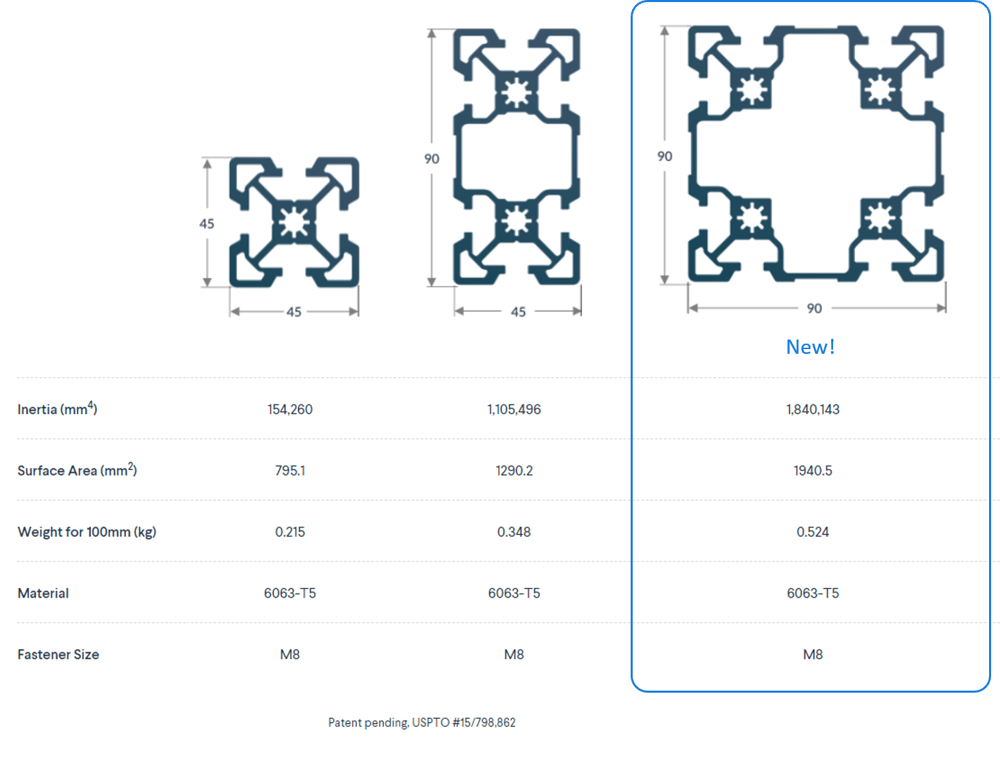
Supporting heavier payloads
The latest T-slot extrusion profile can support up to 6 times our standard 45X45 profile. It has a 66% higher moment of inertia than the 45X90 while being only 50% heavier - even though we doubled its outer dimensions. Given most of our user applications require a safety factor of 2, it is capable of supporting loads of up to 1,200kg on a 1 m-long extrusion.
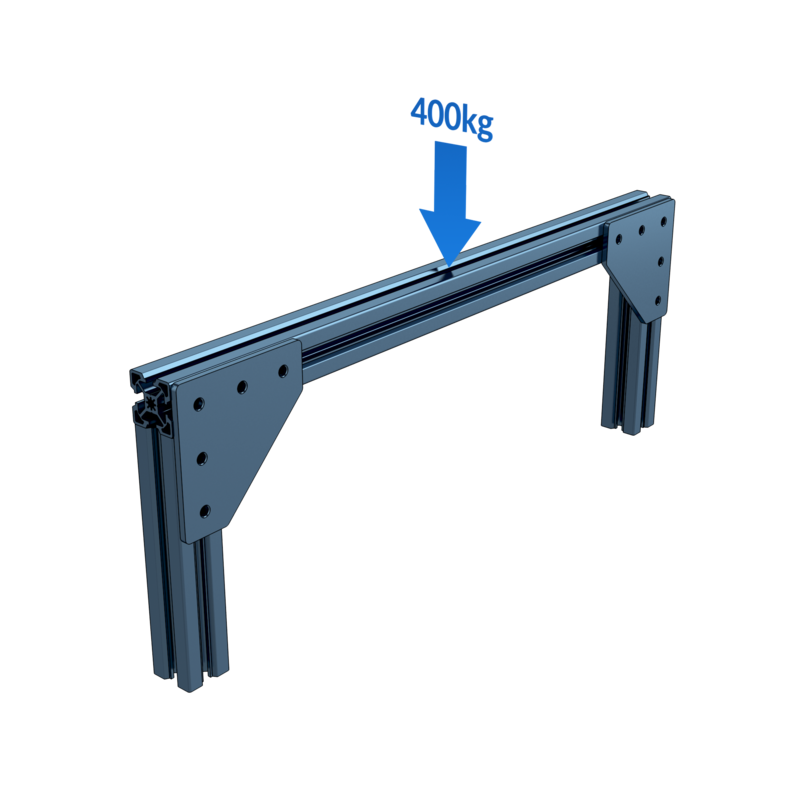 |
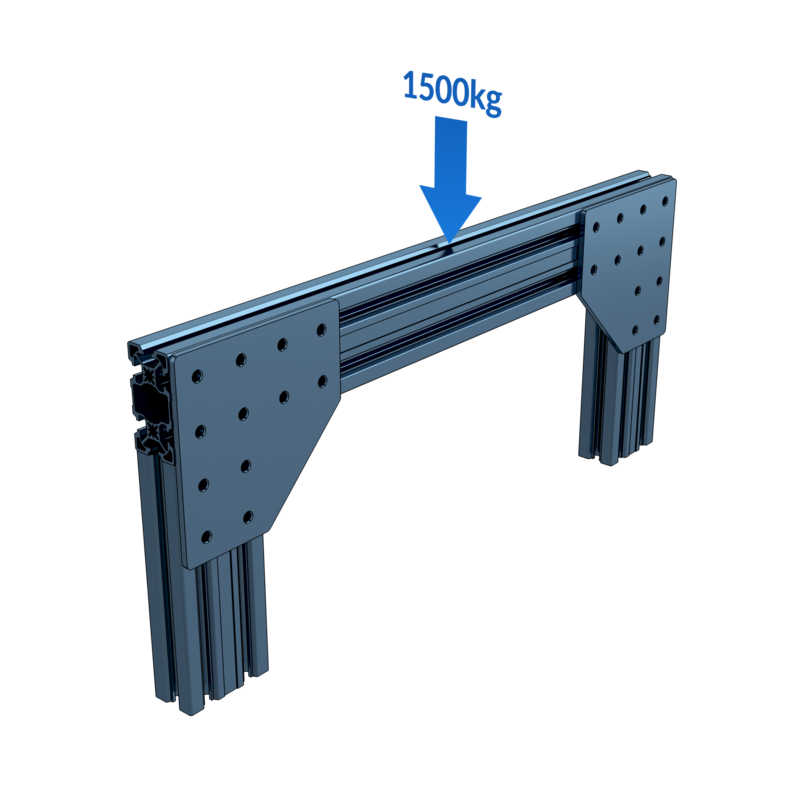 |
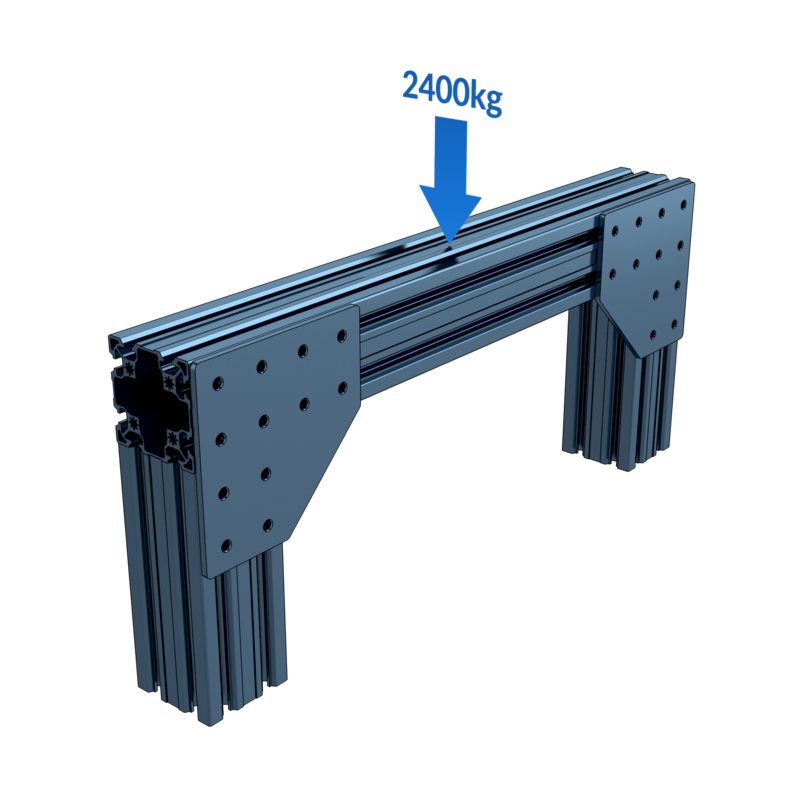 |
|---|---|---|
| 45mm by 45mm | 45mm by 90mm | 90mm by 90mm |
| 400kg max payload | 1,500kg max payload | 2,400kg max payload |
*Results based on simply supported beam calculations for 1m long extrusions. The safety factor is 1.
Designing and testing extrusions at Vention
We initially started thinking about new extrusion profiles when we saw the potential for our users wishing to design for heavy-duty applications. Imagine large palletizers, long 7th axis, or oversized material handling equipment.
Designing an extrusion profile isn’t as easy as it may appear in the first place. All design parameters are highly intertwined. Moment of inertia, surface area, strength-to-weight ratio, torsion performance, fastener compatibility, surface coefficient of friction, etc. The complexity of this optimization problem is often amplified by the non-linear nature of aluminum extrusion assemblies. So how do we test all of this? Despite our FEA simulations, we still rely on destructive testing to confirm our model predictions.
Working with one of our academic partner’s labs at ETS in Montreal, we developed test procedures for assembly joint characterization, coefficient of friction test, fastener pull-out test, and more. This ensures our application engineering team can effectively guide you in your design choices. Need more information about Vention’s patent-pended extrusion profile? Contact our experts today.
Open-source designs
There are already designs featuring this latest addition to our hardware system available in the public library of designs. Get inspired or even jump-start your project today from an existing design.
